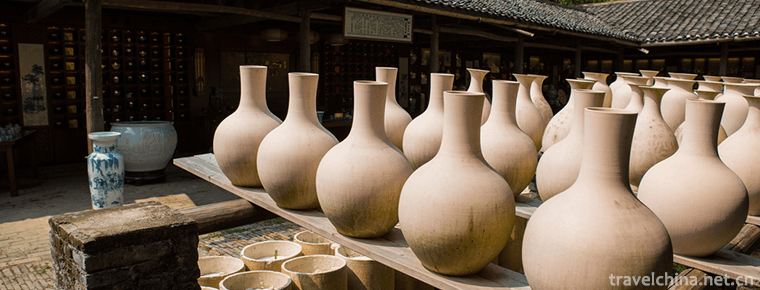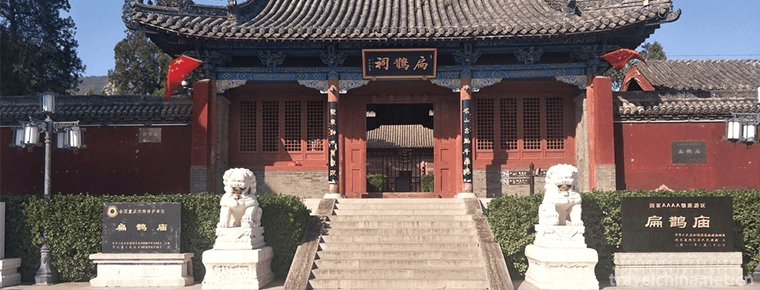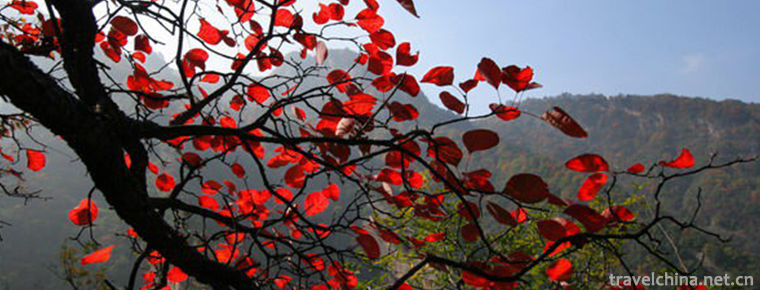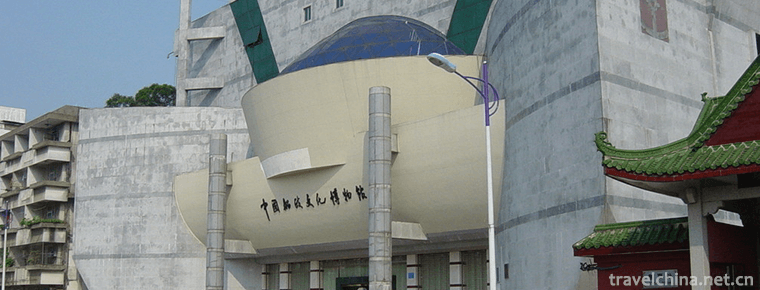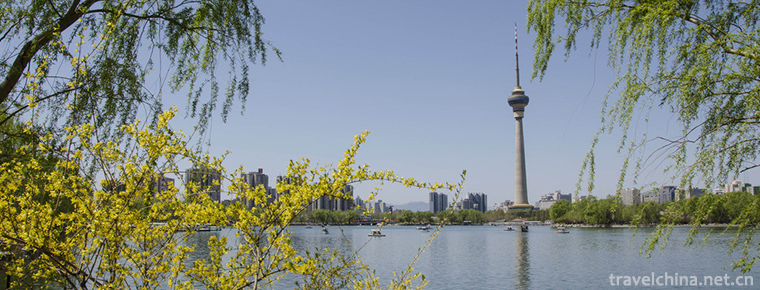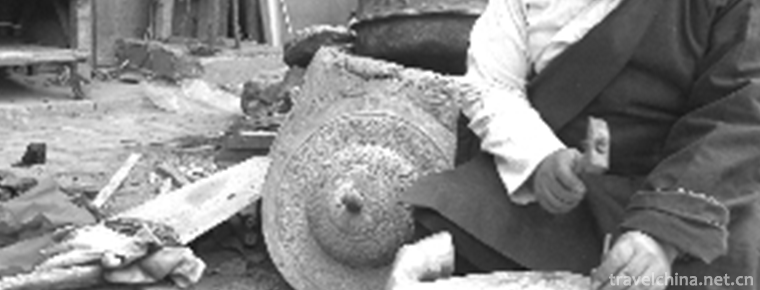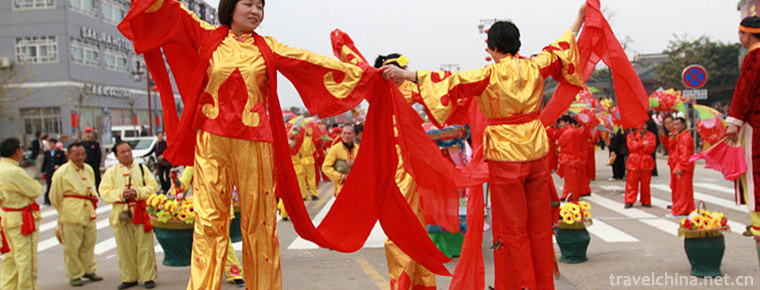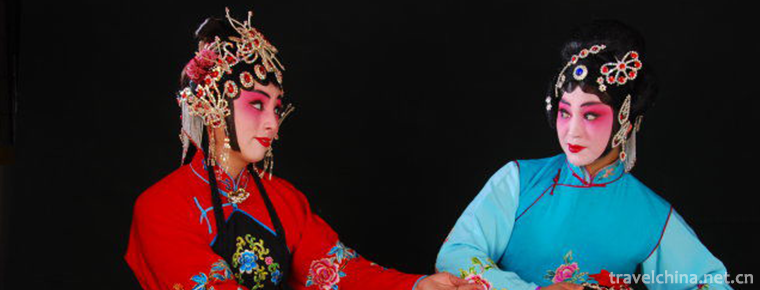hubei drum
hubei drum
The original name of Hubei drum is "drum book", also known as "drum storytelling" and "drum Beijing tune", etc. It is a traditional rap art popular in Xiaogan, Huanggang and Wuhan. In 1950, the name of the Great Drum in Hubei Province was named, and it was widely circulated in Hubei Province.
On June 7, 2008, the "Hubei Drum" jointly declared by Wuhan City and Tuanfeng County of Hubei Province was listed in the second batch of national intangible cultural heritage list with the approval of the State Council.
historical origin
The original drum script in Hubei has the same clan relationship with the traditional drum-ci-type rap art in northern China, and the drum-ci (drum script) is closely related to the story-telling (commentary) in history.
When Buddhism prevailed in the Tang Dynasty, believers not only talked and sang Buddhist scriptures and historical stories, but also talked and sang about folk incidents, such as "Qiuhu Novels" and "Chang Yichao Bianwen". By the Song Dynasty, from "Bianwen" to drum ci, there were some professional scripts. After polishing and processing by literati, these scripts have a higher artistic quality. From Ming Dynasty to Qing Dynasty, drum lyrics became more and more popular in the north and gradually spread to the south.
The history of Drum Books in Hubei Province is rarely recorded in the official history. From the inheritance relationship between drum calligraphers and apprentices, it can be inferred that in the late Qing Dynasty, drum calligraphers were well-known performers and apprentices. It must have lasted longer before that. Among them, the early famous artist Ding Haizhou (Ding Tieban) is said to have come from Shandong Province to Wuhan, Hubei Province to make a living by offering art. He taught five apprentices, including Huangyushan, Pan Hanchi, Wang Mingle, Chen Qianwen, Zhang Mingzhi, Fu Qungang and Hu Wei, who have experienced eight generations of inheritance. At the same time, there are also some famous artists of Gushu such as Wei Yuanzong (Weiguangshan), Liu Yuanzhong (Liu Huangchuan) and Gong Boting, Liu Yuanpeng in Henan Province.
Gushu artists from the north still keep the characteristics of northern drum lyrics when they sing. They use the northern accent, hold two crescent-shaped steel sickles (or iron, copper) in one hand, and stick wooden sticks in the other hand to beat drums and sing. Later, in order to be easily accepted by the people of Hubei, their disciples gradually switched to the Hubei accent and changed their singing tune, gradually adopting the local people's favorite tune. Then, the steel sickle was gradually replaced by cloud plate, the big drum was replaced by the small drum, and the rap was also welcomed by the local people with a local accent, and the popularity was becoming wider and wider until the vast areas of Wuhan, Eastern Hubei and Northern Hubei. In this way, Drum Book took root, blossomed and finalized in Hubei Province, and became an important kind of music in Hubei Province.


-
Expo Area of Acient Kiln & Folk Cultures in Jingde
Jingdezhen Ancient Kiln Folklore Expo Area, located in Fengshu Mountain and Panlonggang, Changjiang District, Jingdezhen City, Jiangxi Province.
Views: 515 Time 2018-12-08 -
Legend of White Snake
Legend of White Snake, local traditional folk literature in Zhenjiang City, Jiangsu Province and Hangzhou City, Zhejiang Province, is one of the national intangible cultural heritage..
Views: 154 Time 2018-12-15 -
nanling national forest park
Nanling National Forest Park is the largest nature reserve in Guangdong Province and a treasure house of rare animals and plants. The park is located in the core of Nanling Mountains.
Views: 138 Time 2018-12-31 -
Bian Que Temple Tourist Area
Bian Que Temple, also known as Bian Que Temple, is situated at the foot of Que Mountain, 26 kilometers west of Neiqiu County Town. It is an ancient building group to worship and worship the Chinese me.
Views: 100 Time 2019-01-03 -
Longyu Bay National Forest Park
Longyuwan National Forest Park is located in Luanchuan County, Henan Province. It is 165 kilometers away from Luoyang City. It covers an area of 1833 hectares.
Views: 132 Time 2019-02-06 -
Mawei Shipping Museum
The Mawei Shipbuilding Cultural Heritage Group in Fuzhou is centered on the Chinese Shipbuilding Cultural Museum, including Zhongpo Battery, Zhaozhong Temple, British Consulate.
Views: 205 Time 2019-02-06 -
yuyuantan park
Yuyuantan Park, AAAA grade scenic spot, is located in Haidian District. East Gate is adjacent to Diaoyutai State Guest House; West to West Third Ring Road is separated from CCTV Tower; South Gate is n.
Views: 163 Time 2019-03-08 -
Tibetan Cobalt Technology
Zhang Zhaxi, a Tibetan cobalt-smelting craftsman over half a century old, told reporters that he was just "catching its tail" when the craft was losing its popularity..
Views: 164 Time 2019-04-15 -
Stilts
Stilts, also known as "Stilts Yangko", is a folk dance widely spread throughout the country. It is named for its many feet on stilts when dancing. Stilts have a long history, originating fro.
Views: 81 Time 2019-04-30 -
Wu Anpings tune
Wu'anping DiaoLaozi originated in the late Ming and early Qing Dynasty. Wu'anping DiaoLaozi and Wu'anluozi are two unique local operas in Wu'an City, Hebei Province. They are often performed together..
Views: 297 Time 2019-06-30 -
Lizhou ancient town
Lizhou ancient town is a big post station of the ancient Southern Silk Road, an ancient town of Liangshan Yi Autonomous Prefecture, and the place where the red army went through the long march..
Views: 191 Time 2020-10-16

